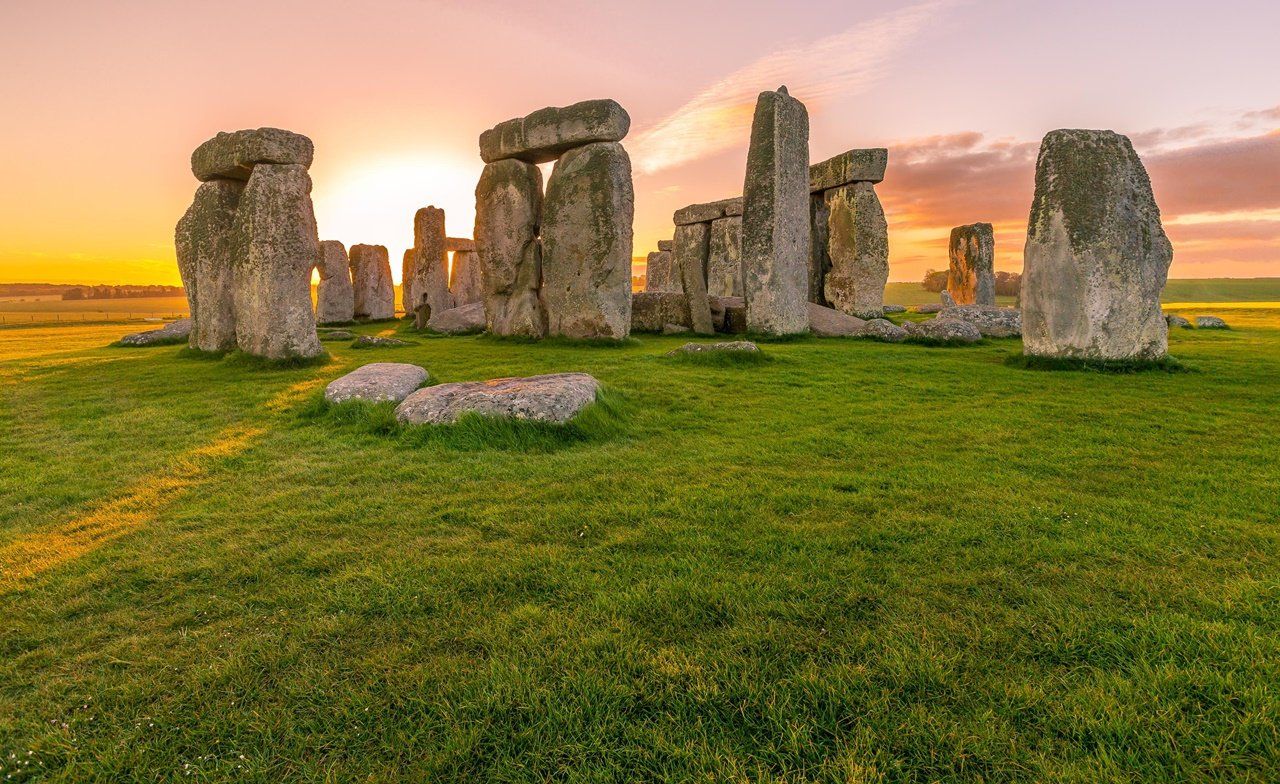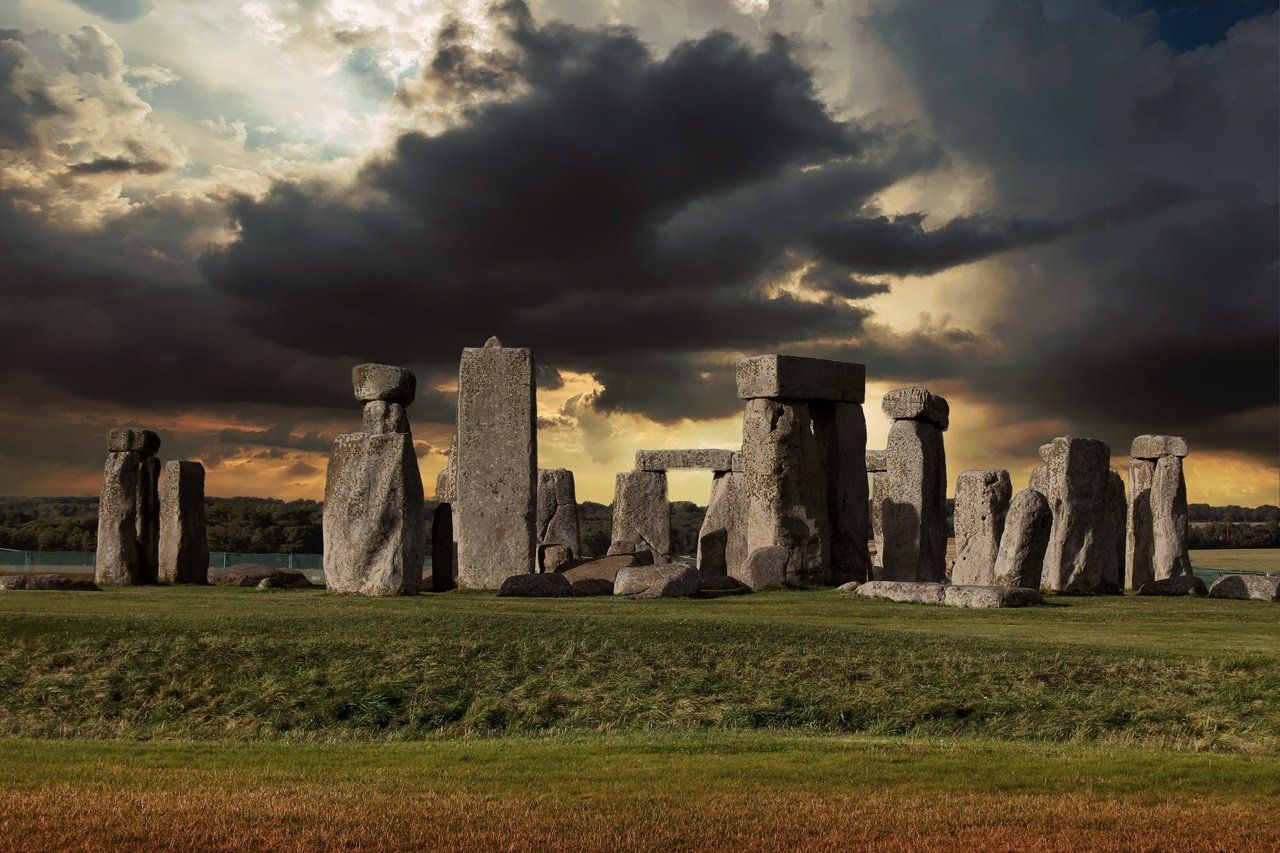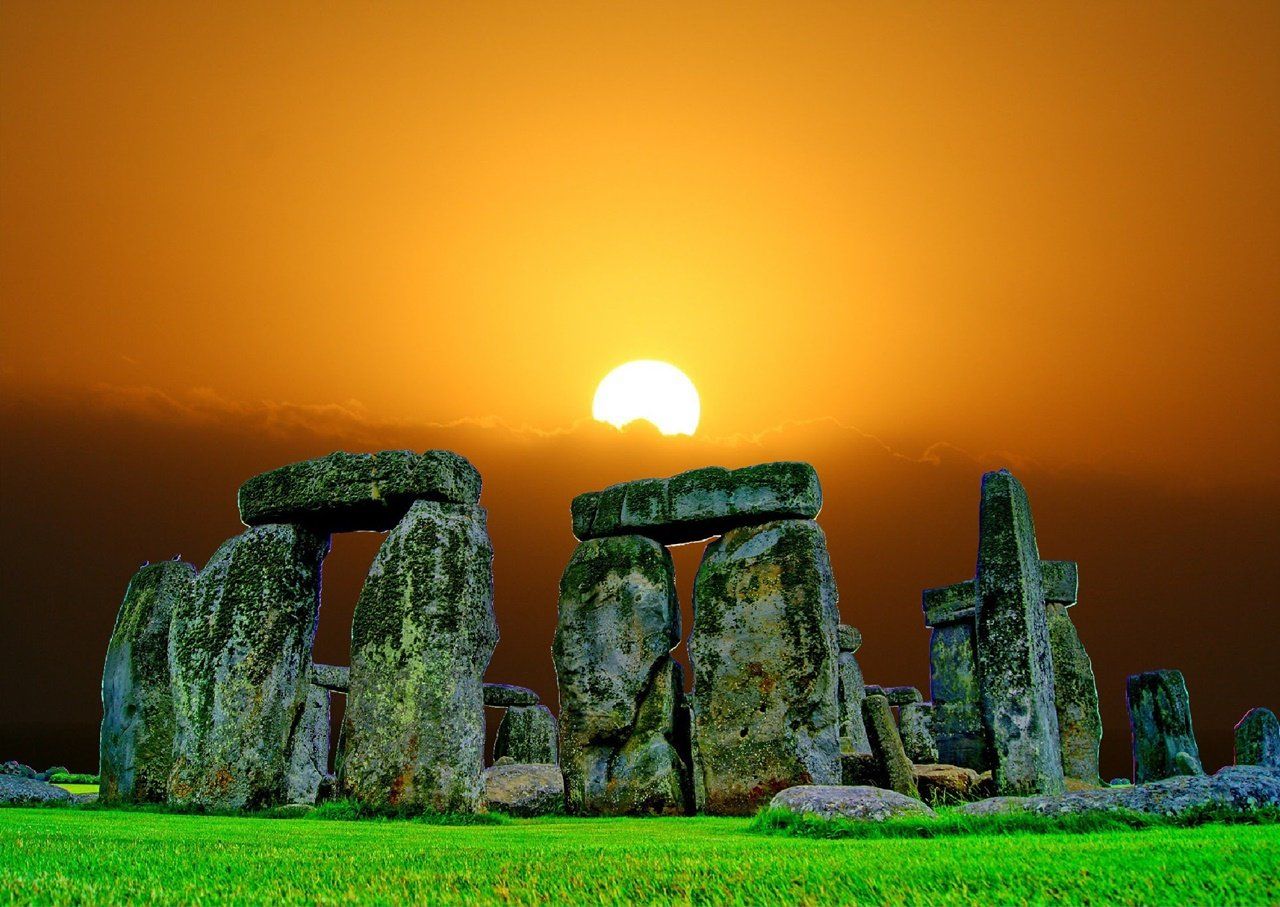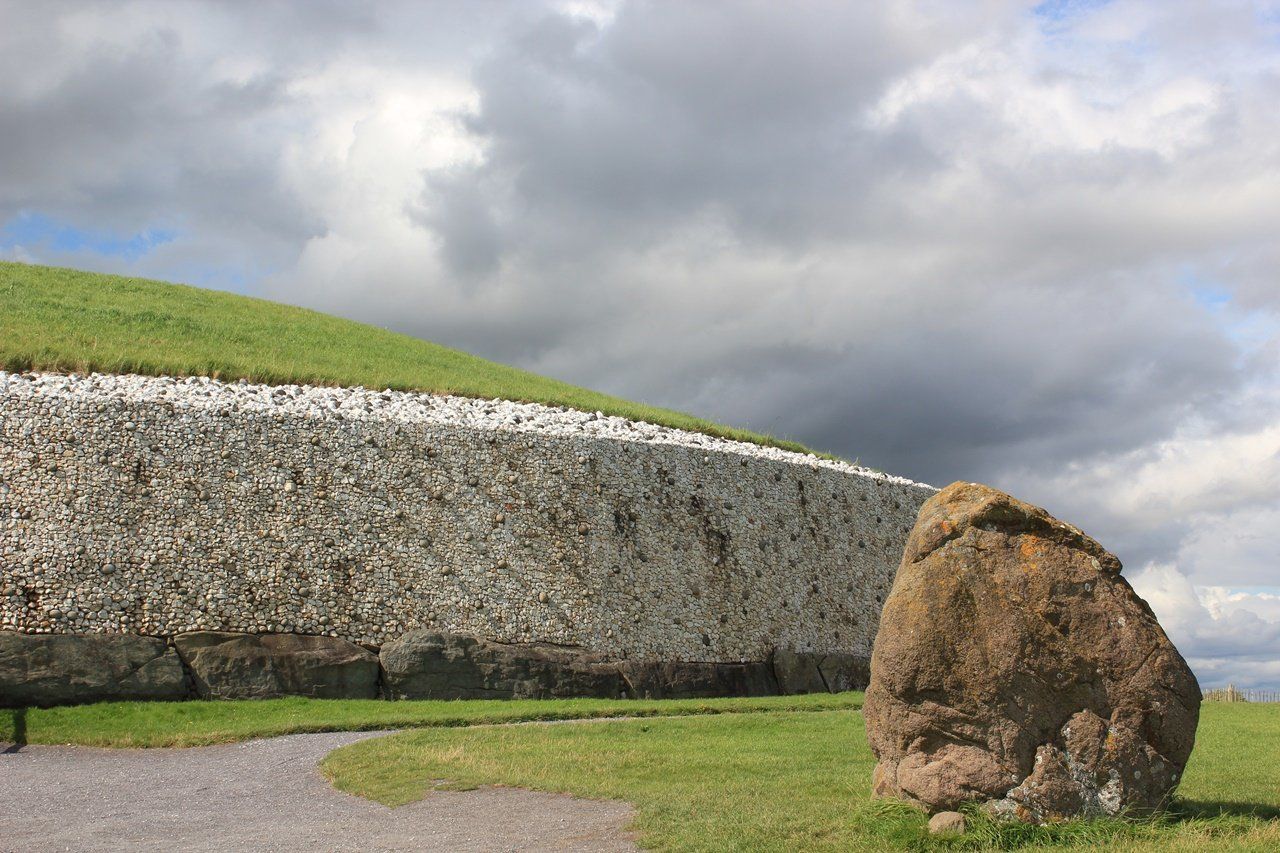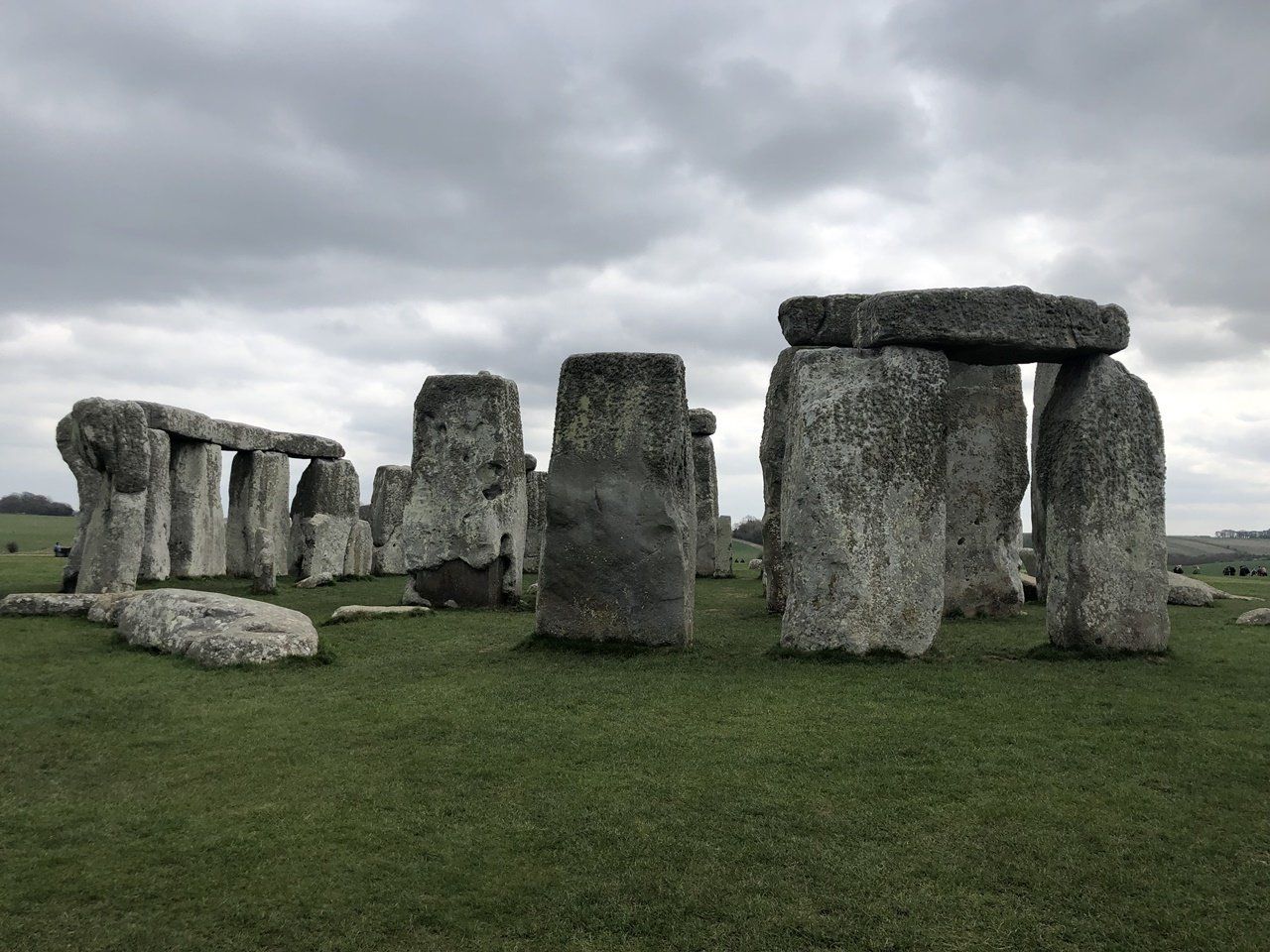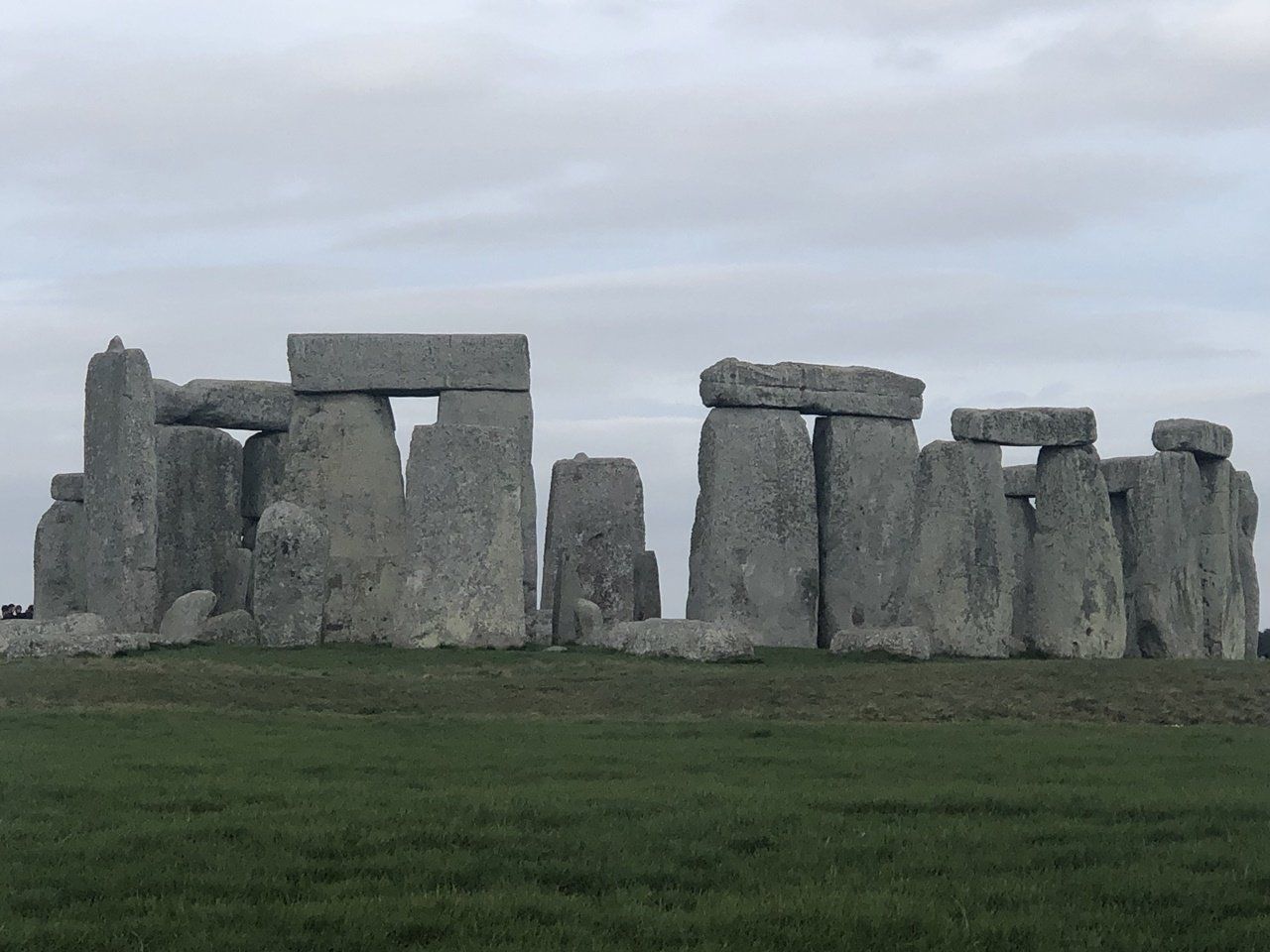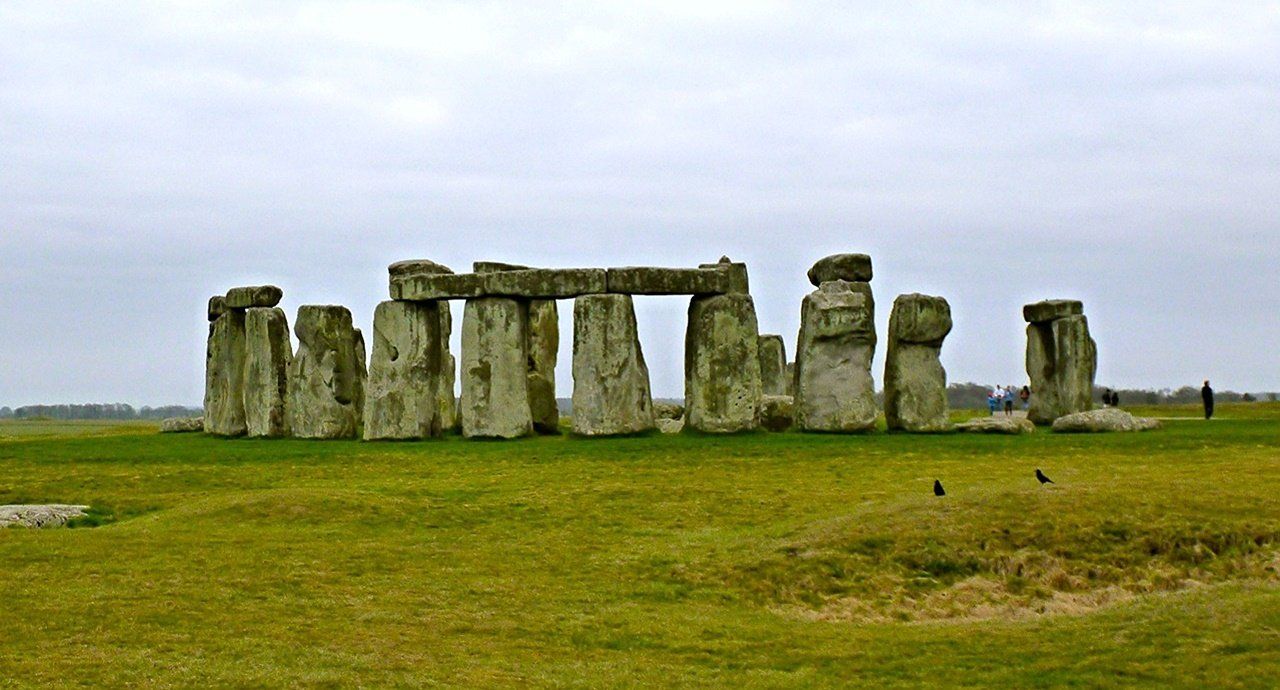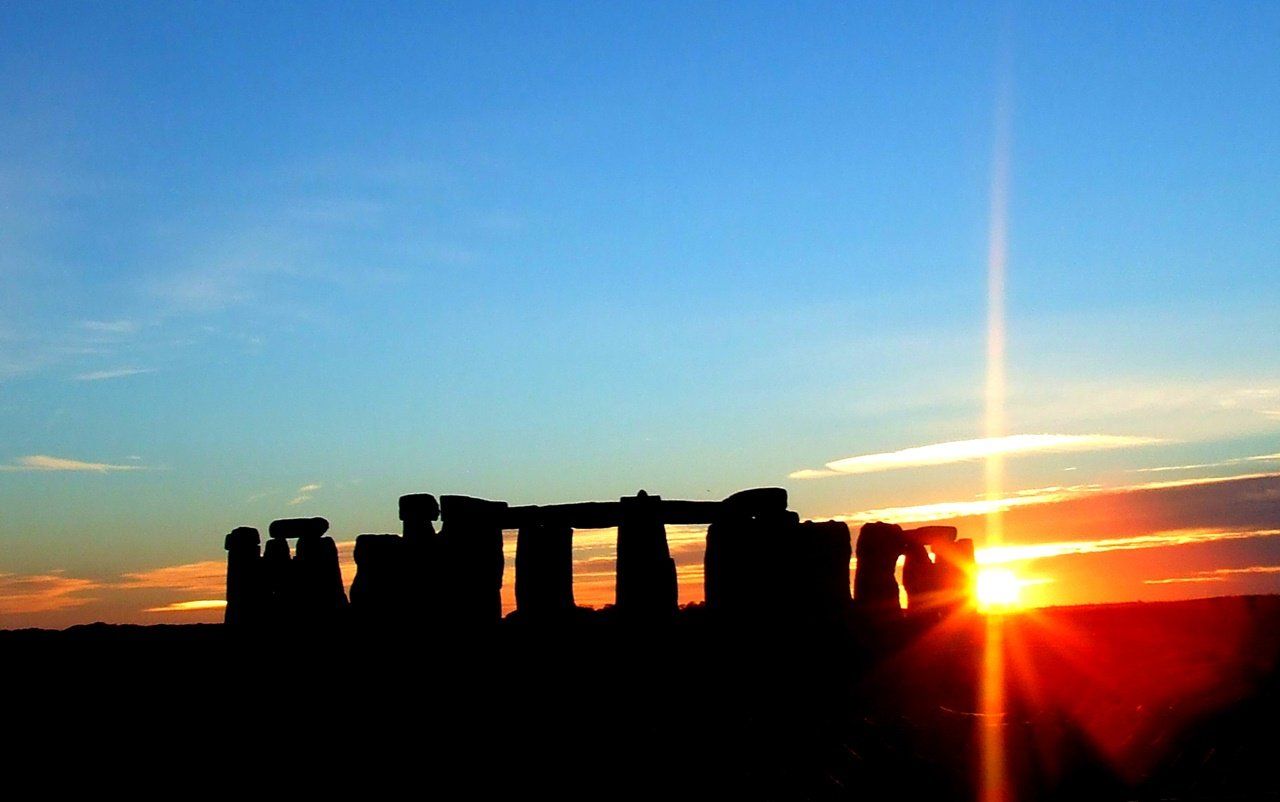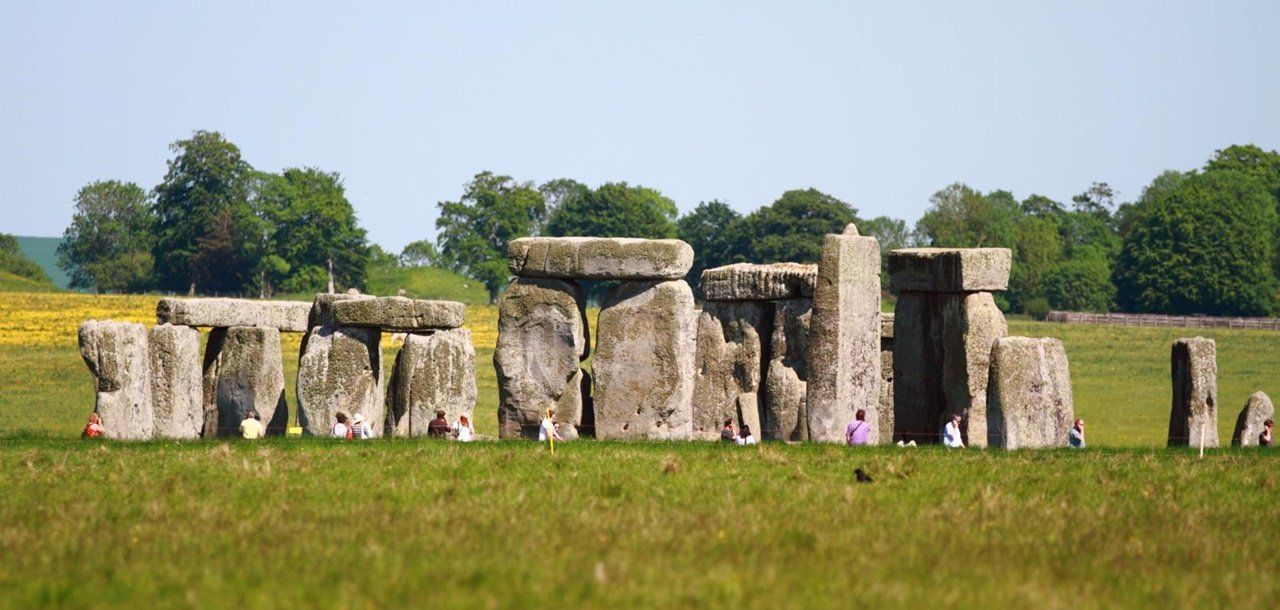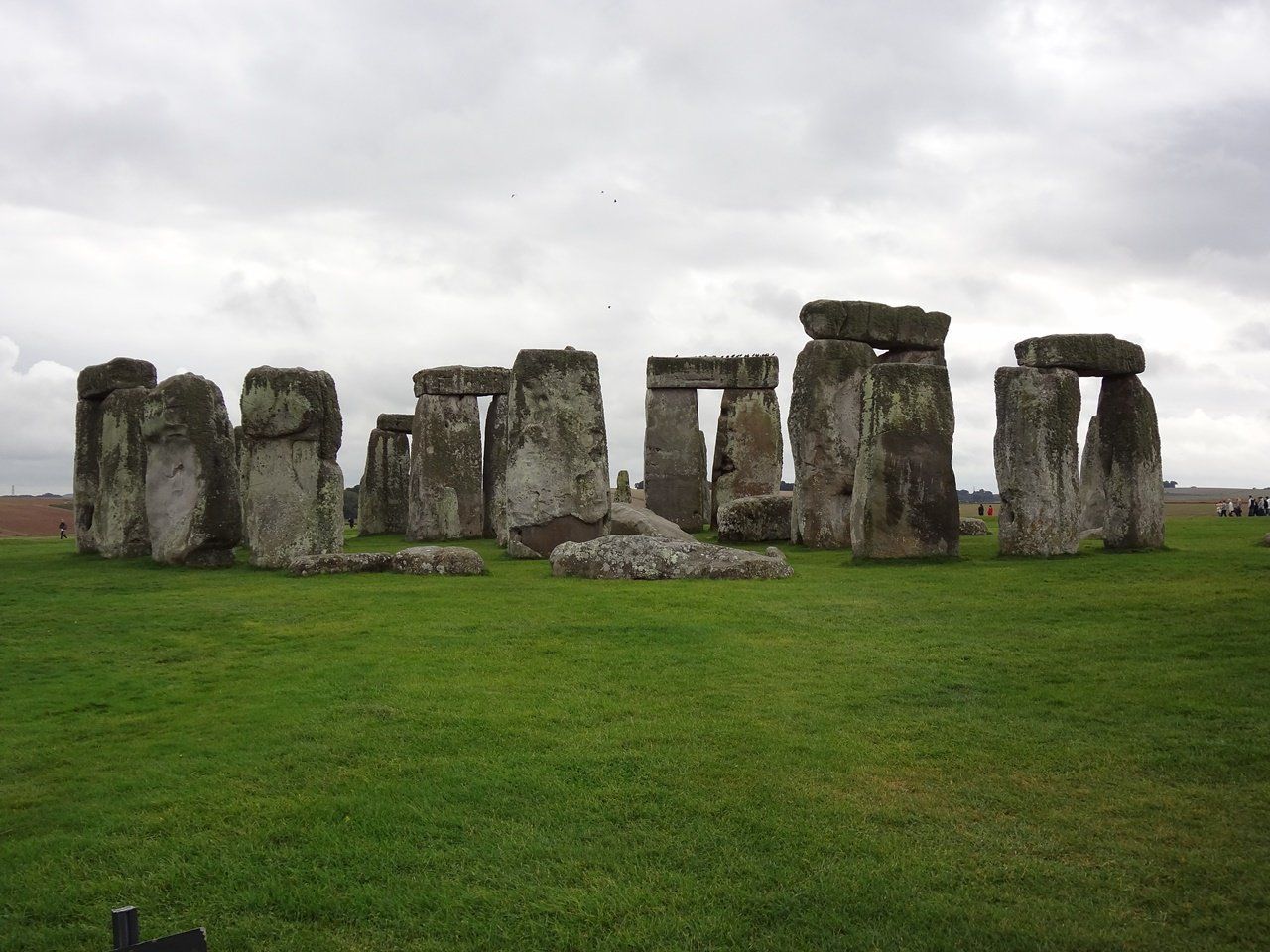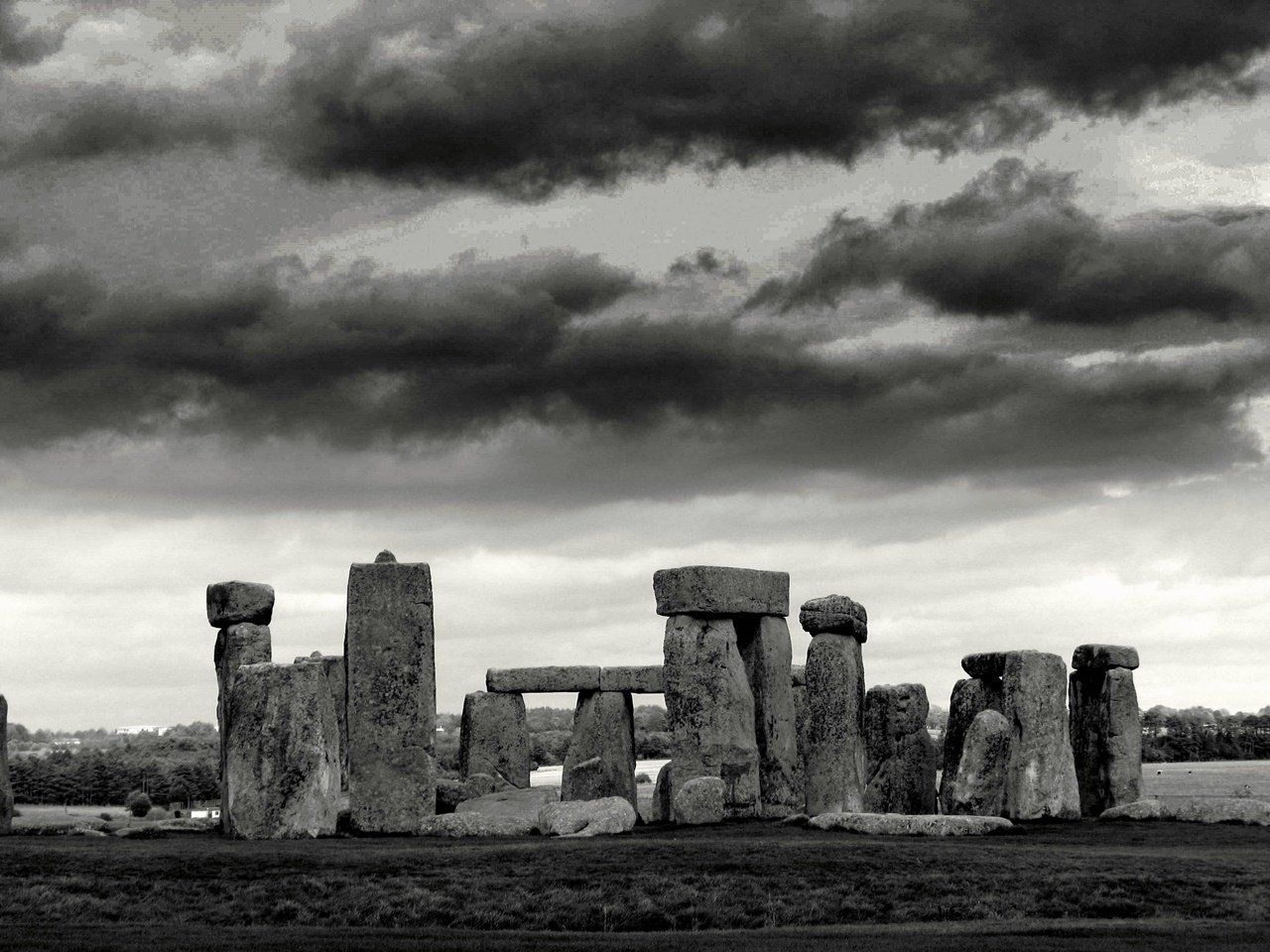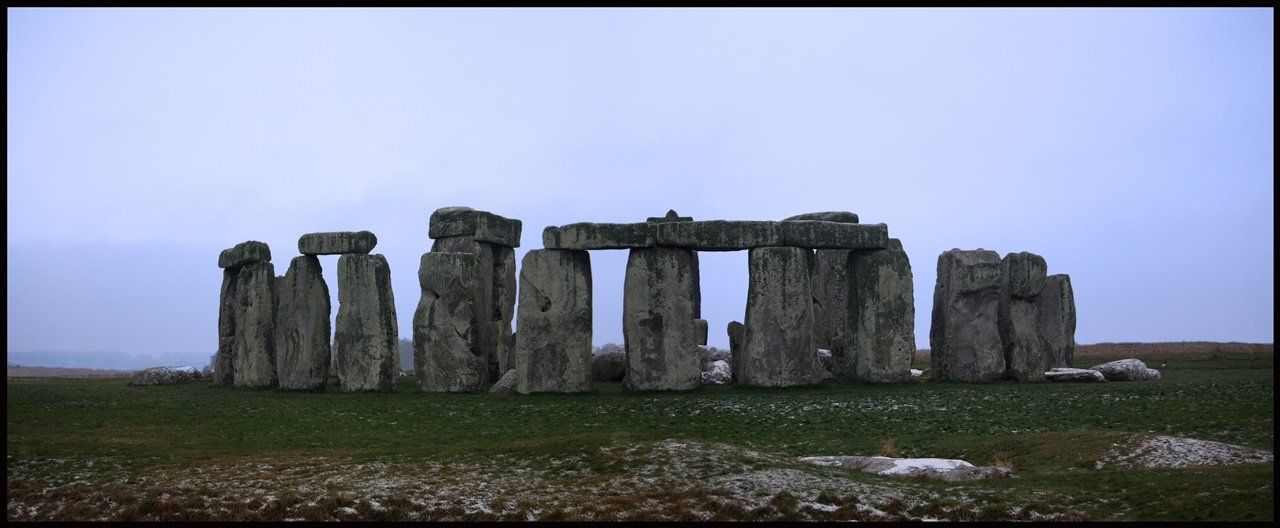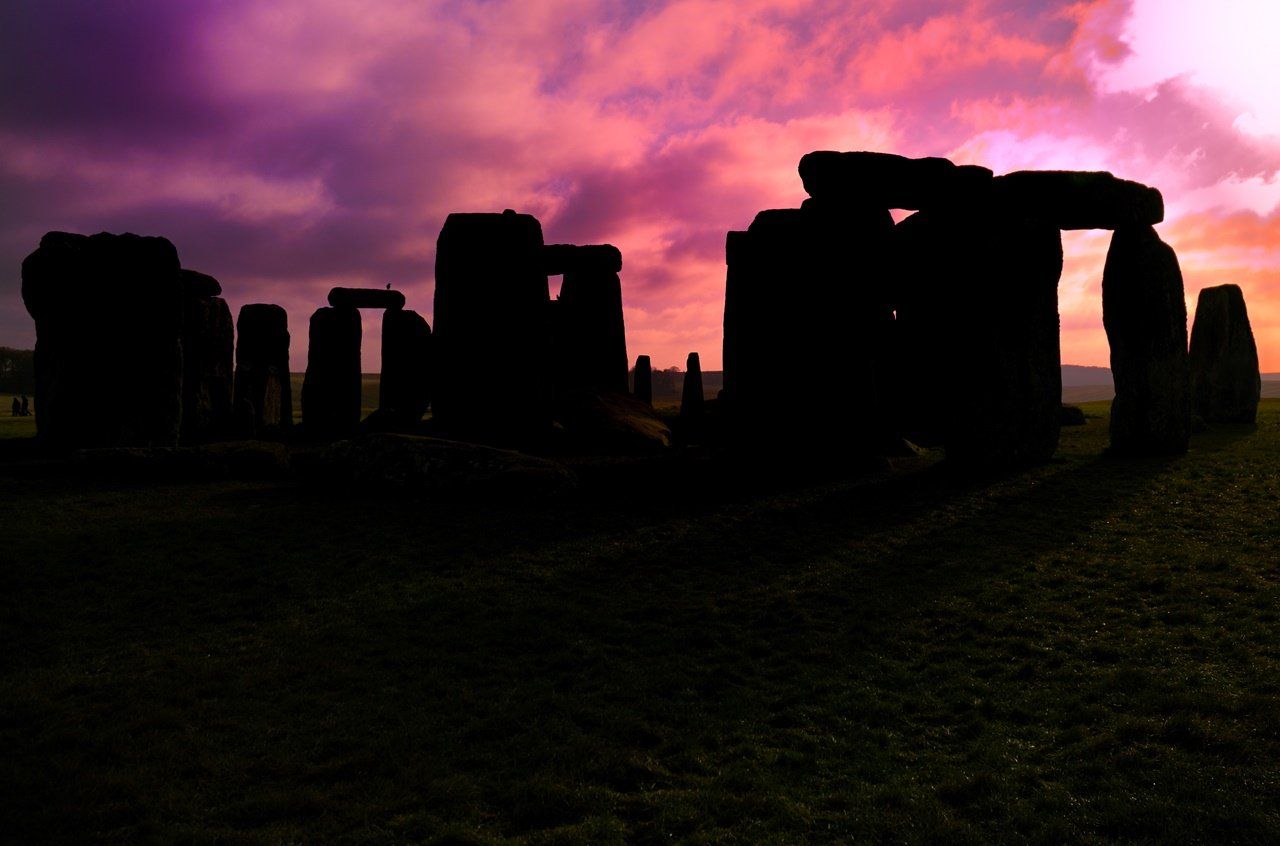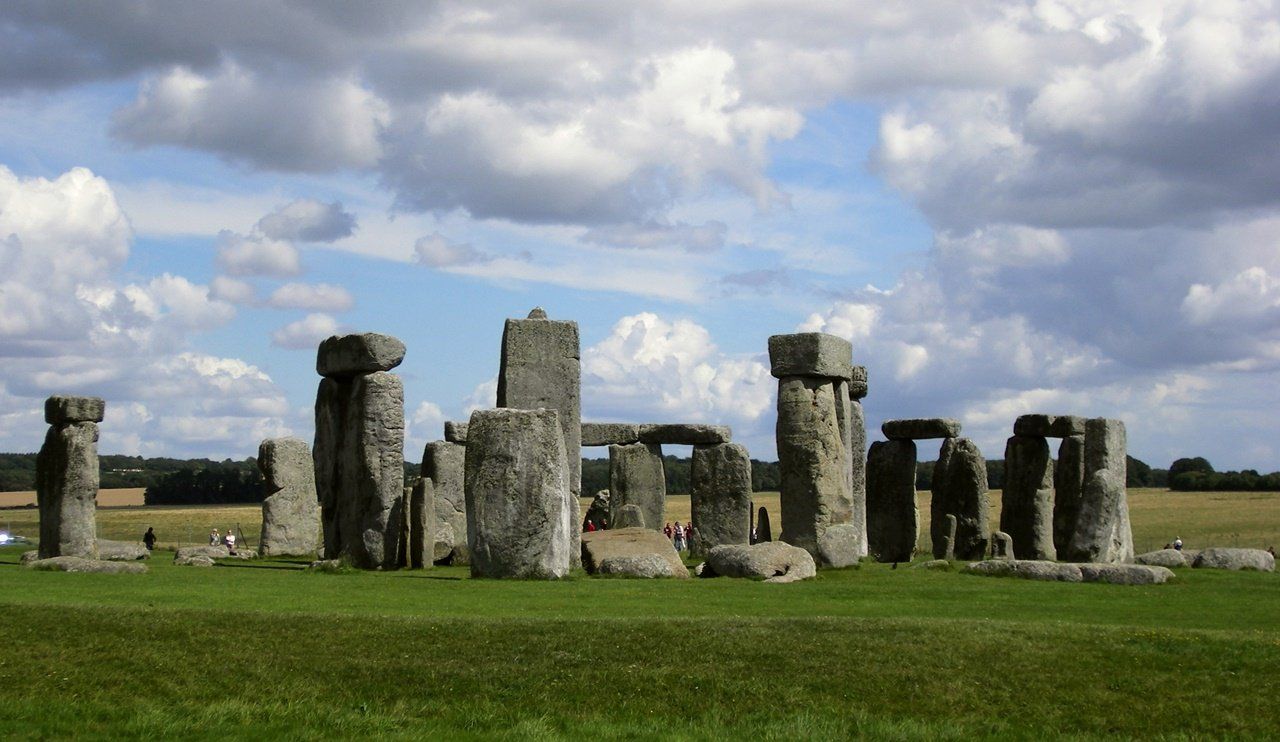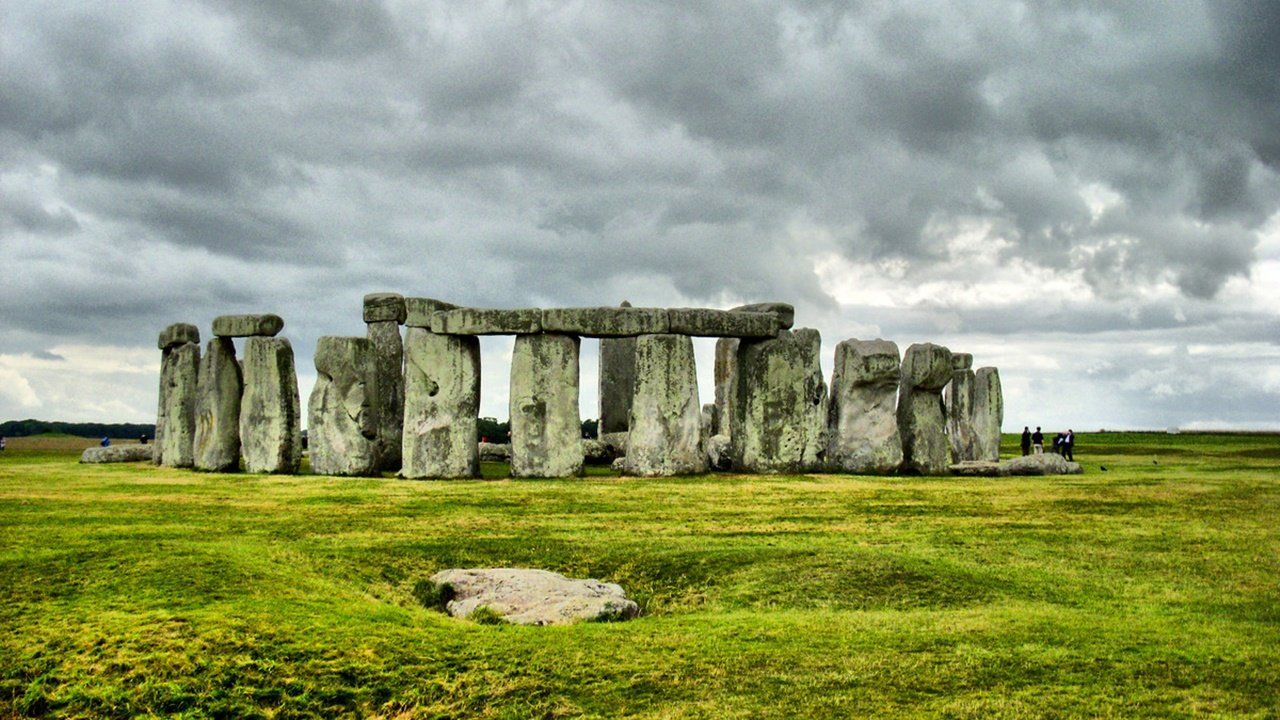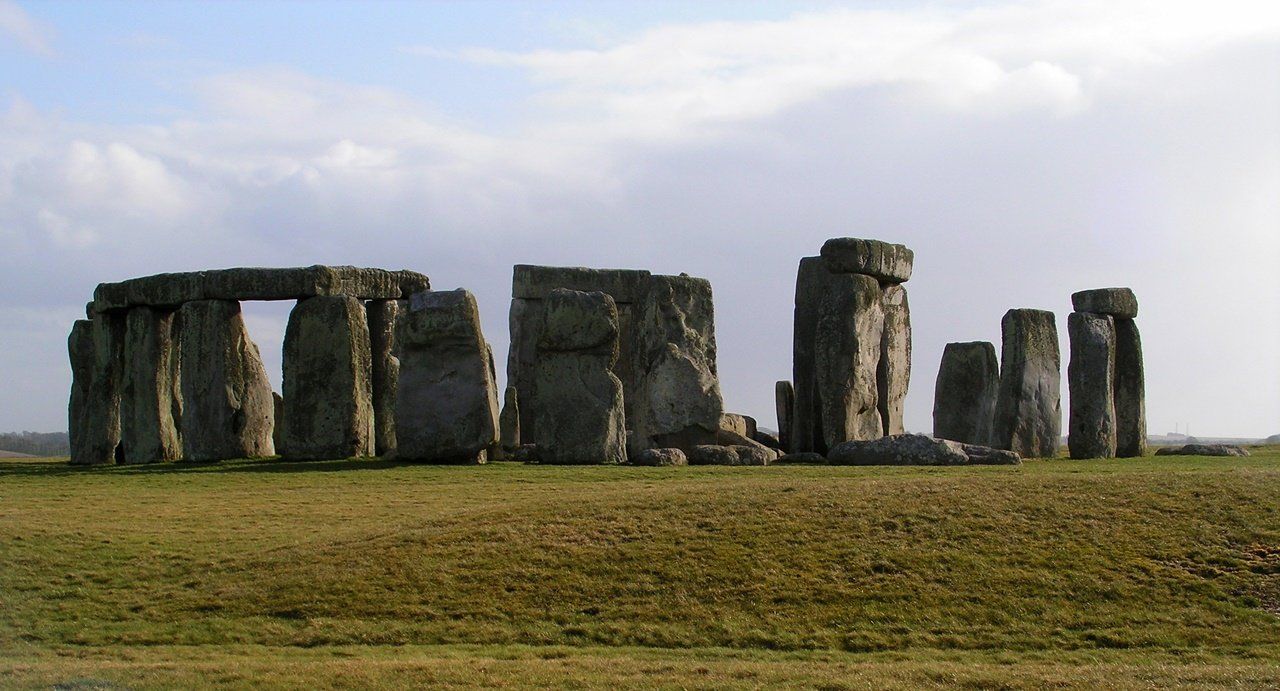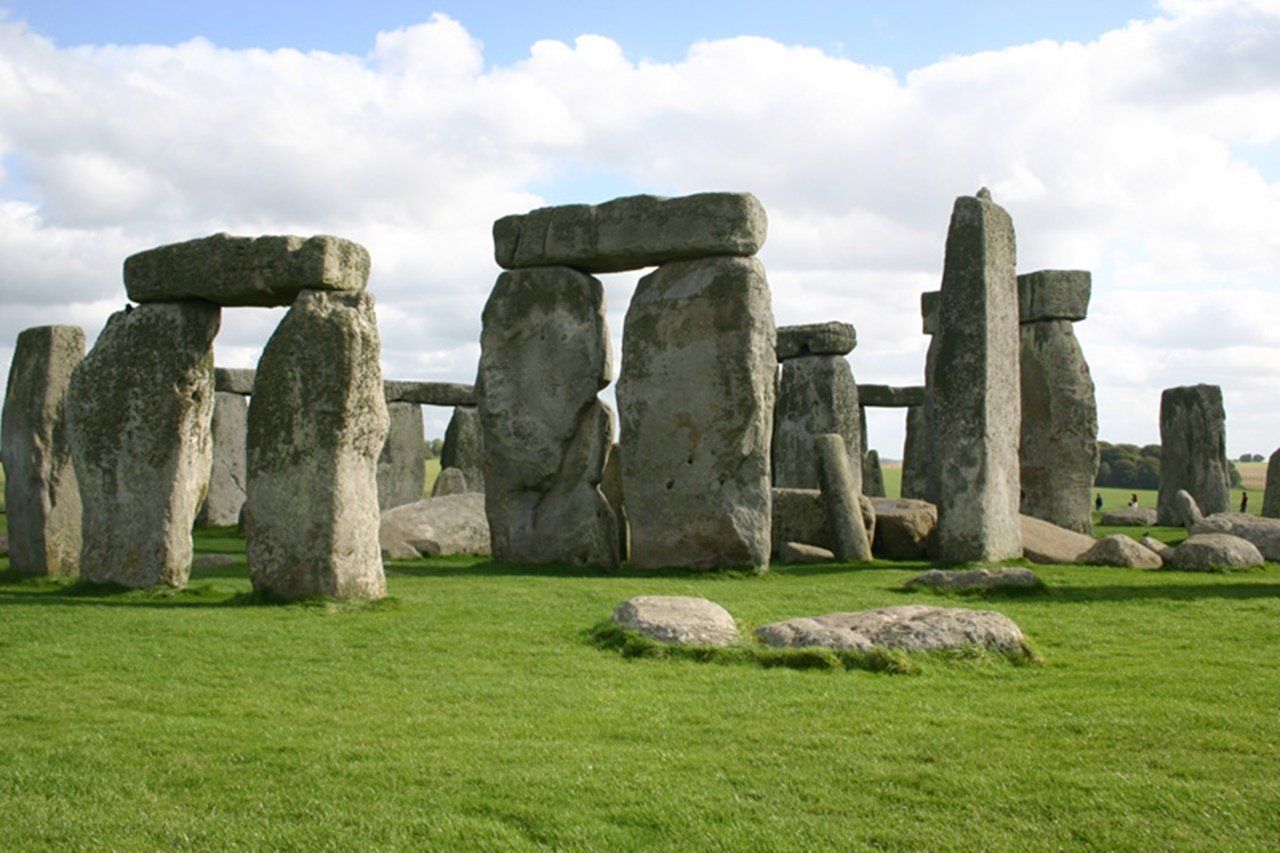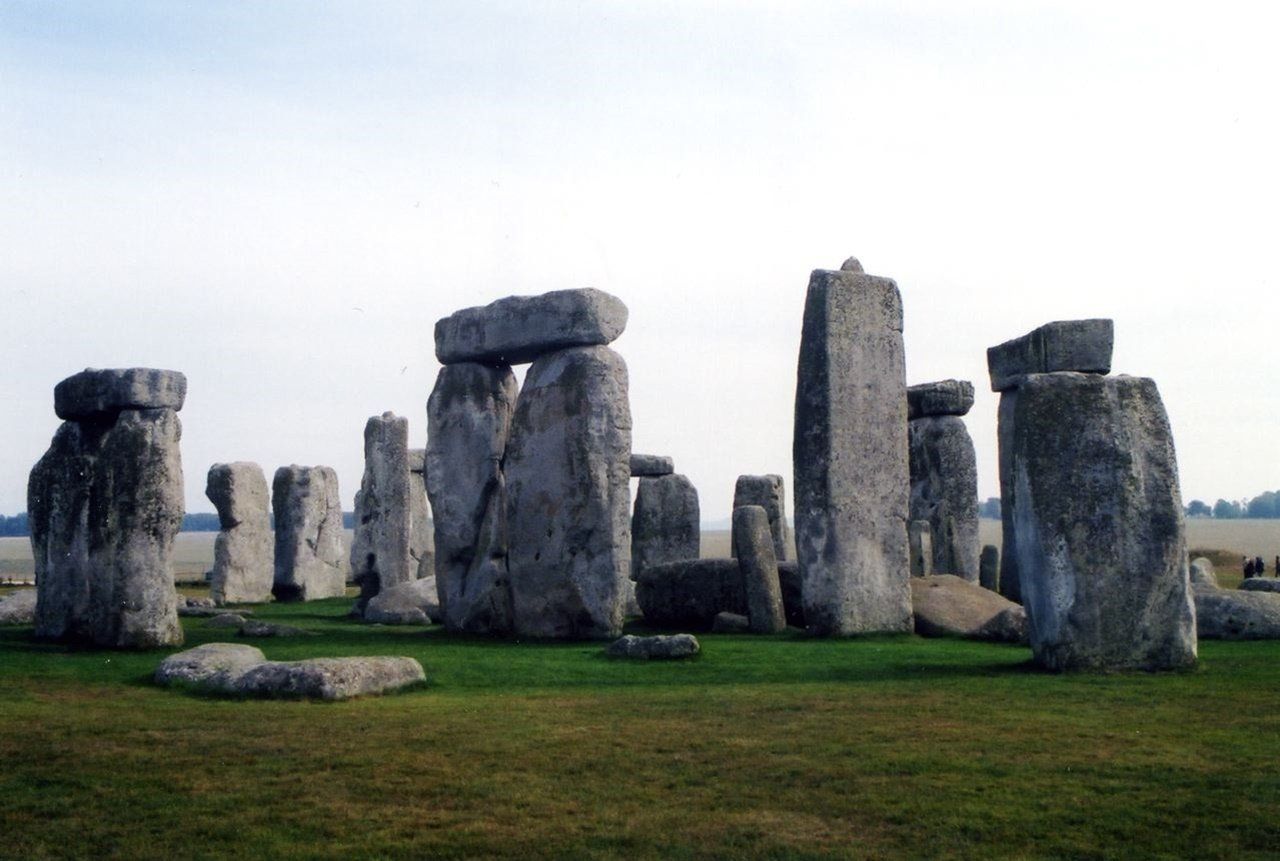Stonehenge
Just one word for Stonehenge that we want to describe is “mistery”. For many of us, Stonehenge is the only place in the prehistory of Britain. The famous stone circle on Salisbury Plains has been a constant source of fascination for centuries, with its signature lintel-topped sarsens. A circular ditch and bank were built in 2900 BC, where the first monument was built, and a timber or stone circle was installed inside. Then, in 2400 BC, the first local rock monoliths were brought in much later. Over the next several hundred years, stones have been raised, brought down, moved around, added to the shape we can see today and then finally reassembled. But, why were the ancient British at Stonehenge building such a huge monument? What did this sacred site go on exactly? Some think Stonehenge has been used to study the Sun and Moon movements. Others believe it was a healing place. The ancient British believed that their lives had been dominated by the Sun and the Moon. They are likely on Midsummer's Day (longest day of the year) and Midsummer's (shortest day of the year) to hold special ceremonies in Stonehenge. New interest has risen in England's favourite prehistoric monument due to the recent discovery of a "Superhenge" near Stonehenge. You know Stonehenge's look, and probably you heard about it, but how well do you know the UNESCO World Heritage Site? While many questions about who, how and why Stonehenge's building linger, scientists get a fair picture of when it was building a massive monument. In a field, a tombstone 6 feet deep was dug into a circular enclosure, and the oldest elements date back to around 3000 BC. The signature stones began to be about 2500 BC, and bluestones were erected and rearranged and extra hole grafts could have gone on until about 1500 BC. Not finished, there are two main kinds of stones within Stonehenge. Sarsen is a type of sandstone, common in the area, the large verticals and the arches. The smaller stones are called blues. Although not all of them are blue, when wet, they seem to have a little bluish tint. The three-part giant arches that are known to Stonehenge are called trilithons. The Neolithic builders of Stonehenge did not buy local when it was time to purchase construction goods. Geologically linked with the Preseli Mountains in Wales were some smaller blues, which still weigh up to four tonnes. Most modern scholars, while not everyone agrees, believe that these giant stones had to be moved to the Stonehenge for 150 miles. The way the stones made their trip is one of the great mysteries of Stonehenge, with theories ranging from rafts to bovine teams. Even if it remains a mystery to Stonehenge's purposes, anthropologists can certainly say that the monument was the resting place of cremated remnants in the period before the first large stones appeared. It is now known that there have been at least 64 Neolithic remains in the 56 ponds or "Aubrey holes" in the area. All the human remains discovered at Stonehenge were ashamed for most of modern history. However, in 1923, a decapitated Anglo-Saxon man of the 7th century CE was found by archaeologists. The man's baptism suggests he was a criminal who was executed, but his burial at Stonehenge could indicate that he was formerly in power, possibly royal. The dark past of Stonehenge has produced innumerable theories concerning its original use. Theories go from the Druid temple to a ceremonial place for the coronation of Danish kings. More far-fetched theories speculate that Stonehenge is an ancient visitor's model of the solar system. In his opinion, English Heritage, the agency that operates the site, is likely to be accurate, noting that "Today, Stonehenge's most commonly accepted understanding is that of a prehistoric temple aligned with the motion of the Sun." Historians and explorers Henry of Huntingdon made what it is thought to be the first written mention of Stonehenge in the following passage, dating back to 1130 CE: "The Stanenges, where the doors have been erected in stone of wonderful sizes so that the door seems raised at the gate”. In the later part of his life, Charles Darwin focused his attention on the humble earthworm and a year before his death published the catchy Formation of Vegetable Mold by the work of Worms. The renowned naturalist research at Stonehenge was covered in a section of the book. In the 1870s, Darwin studied the endemic earthworm populations in order to persuade the world of their important role in nature. He was one of the earliest in Stonehenge's contemporary research excavations. After years of discussions about whether Stonehenge was ever a complete circle, archaeologists got help from an unlikely resource to solve the mystery: a drought in 2014. As conservators did not have enough tapering to water all of Stonehenge's grass during drought, odd, patchy marks started to appear in the grass. The areas pointed to the position of stones previously present or buried over the centuries, and the question seemed to resolve whether Stonehenge was a circle once. Once we exit the visitor centre, we will walk around the Neolithic houses. Just step in and imagine how 4,500 years ago people lived. Discover how houses were built with real materials and techniques, based on evidence of houses found nearby and chat with our volunteers. Standing in the stone is a virtual attraction. See the seasons and take a trip to the city centre from the inside of the stones with our incredible 360 degrees audio-visual view. Imagine how it feels to stand with this unique and memorable experience in the middle of Stonehenge in winter and summer equinox. In Stonehenge, for the first time, there are more than 250 archaeological objects and treasures discovered in the countryside. Many of these items are borrowed from the museum partners, the Salisbury Museum and the Wiltshire Museum, ranging from jewellery, potters and tools to ancient human remains. Stonehenge Exhibition is truly impressive. A man's face, 5500 years ago, found here near Stonehenge, a forensic reconstruction based on its bones. Jaw dropping experience right in the middle of Salisbury Plain. Join us to explore the misery with our professional guides.

